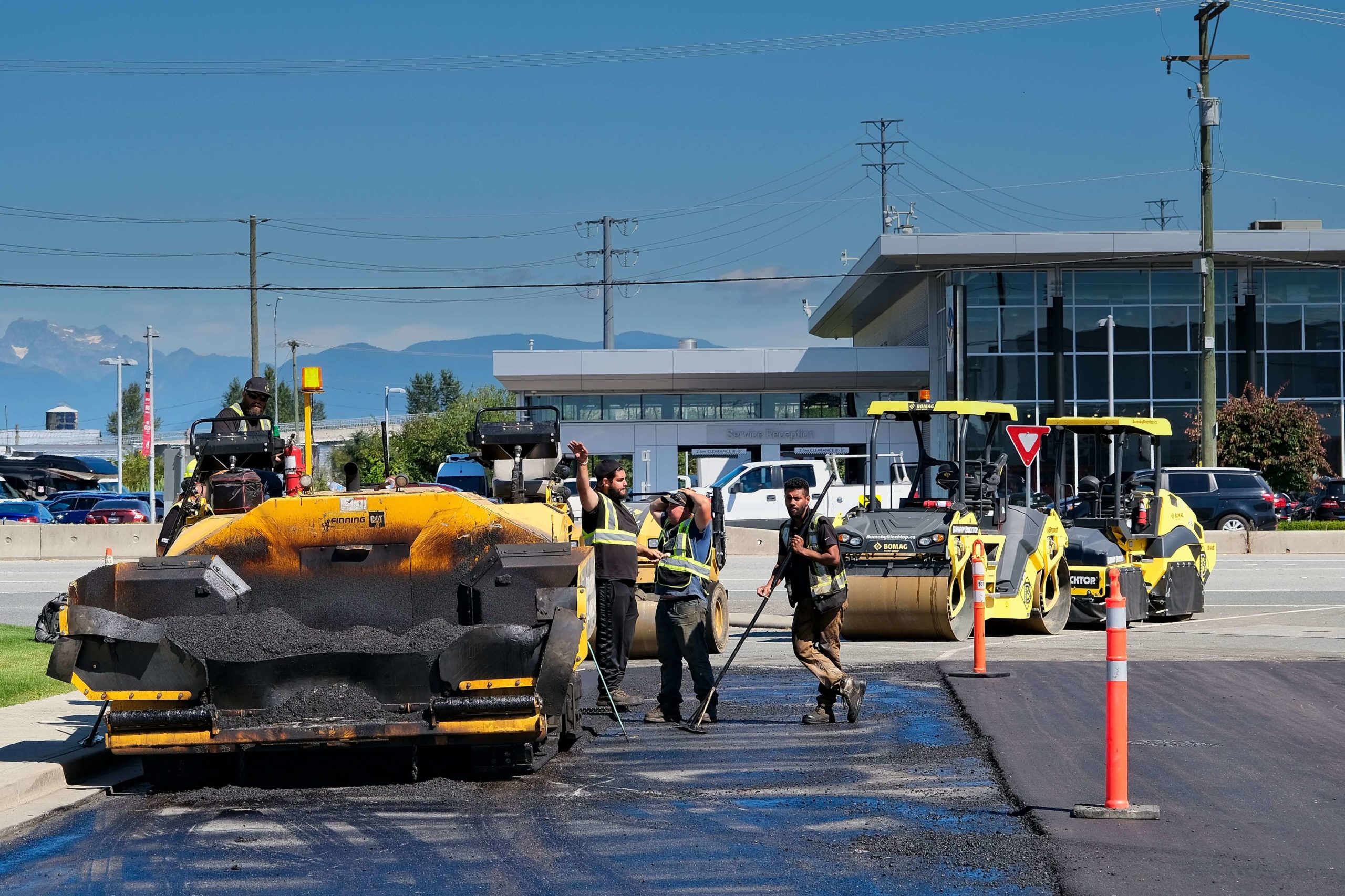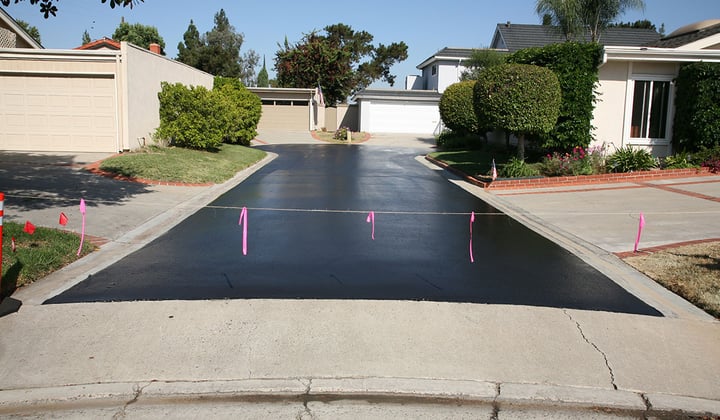Mastering Angled Parking: How Asphalt Sealing Improves Business Whole Lots
Mastering Angled Parking: How Asphalt Sealing Improves Business Whole Lots
Blog Article
Warm Mix Asphalt: A Lasting Remedy for Sidewalk
Warm Mix Asphalt (HMA) has actually become a leading lasting selection for sidewalk remedies, offering a myriad of innovative modern technologies and environmental advantages. Its capability to recycle products and minimize energy consumption presents an engaging instance for its fostering in road construction projects. The long-term efficiency and toughness of HMA make it a favored option for framework advancement. As the need for green building and construction methods grows, discovering the subtleties of HMA's sustainability can offer valuable understandings into the future of sidewalk options.
Ecological Benefits of Hot Mix Asphalt

Furthermore, Hot Mix Asphalt aids to reduce urban warm island effects. Its dark shade takes in sunlight, reducing the quantity of warmth showed back right into the atmosphere compared to lighter-colored sidewalks. This can lower ambient temperatures in city areas, reducing the need for air conditioning and inevitably decreasing power consumption.
Furthermore, Hot Mix Asphalt adds to improved stormwater management. Its permeable nature allows water to reenergize and infiltrate the pavement groundwater supplies, decreasing overflow and the threat of flooding. These ecological advantages make Warm Mix Asphalt a lasting choice for paving roads and highways.
Energy Effectiveness in HMA Production
Is power efficiency a vital factor in the manufacturing of Hot Mix Asphalt (HMA)? Energy plays a substantial duty in the production of HMA, impacting both cost and ecological sustainability. One vital aspect of energy effectiveness in HMA production is the use of cozy mix asphalt (WMA) innovations.
Moreover, improvements in plant innovations have led to more energy-efficient HMA production procedures. Modern plants are designed with features like recycled asphalt pavement (RAP) processing capacities, reliable burner systems, and improved insulation, all adding to power cost savings. By maximizing energy use in HMA manufacturing, the sector can lower its carbon impact while maintaining high-quality sidewalk products. Energy performance is, for that reason, a crucial factor to consider in ensuring the sustainability of Hot Mix Asphalt manufacturing.
Recyclability of Hot Mix Asphalt
The recyclability of Warm Mix Asphalt (HMA) is an essential element of its sustainability and long-term environmental effect. HMA is just one of the most recycled materials in the United States, with over 100 million have a peek at this site bunches of reclaimed asphalt pavement (RAP) being reused every year in new pavement building and construction. Reusing HMA offers a number of ecological advantages, such as reducing the demand for virgin products, decreasing power consumption throughout production, and decreasing the amount of waste sent to garbage dumps.
The process of recycling HMA includes grating the existing sidewalk, squashing it right into smaller sized items, and blending it with brand-new accumulation and asphalt binder to produce a recycled mix. This recycled mix can usually do in addition to or perhaps far better than traditional HMA, while calling for less resources and producing lower greenhouse gas discharges. By integrating RAP into new pavement projects, roadway agencies can preserve natural deposits, reduce prices, and decrease the ecological impact of roadway construction and maintenance tasks. Generally, the recyclability of HMA plays a significant duty in promoting sustainable practices within the pavement market.
:max_bytes(150000):strip_icc()/barricade-tape-sealed-driveway-big-56a583145f9b58b7d0dd3d87.jpg)
Long-Term Efficiency of HMA
Asphalt sidewalks demonstrate longevity and strength over an extended duration, showing the lasting performance see this website of Warm click Mix Asphalt (HMA) Additionally, improvements in HMA technology, such as the usage of polymer-modified binders and cozy mix asphalt, have additionally enhanced the toughness and longevity of HMA pavements. By focusing on quality building and upkeep practices, HMA continues to confirm itself as a cost-efficient and sustainable option for durable pavement facilities.

HMA: Sturdiness and Sustainability
Demonstrating both longevity and sustainability, Warm Mix Asphalt (HMA) has come to be a foundation in the building and construction of resilient pavement facilities - regrading. HMA's resilience originates from its capability to withstand hefty loads, extreme weather, and high traffic quantities, making it a dependable selection for streets, highways, and airport terminal paths. The structure of HMA, which commonly includes accumulations, binder, and filler, plays an important duty in enhancing its durability and resistance to wear and tear
In addition, HMA's sustainability hinges on its recyclability and energy-efficient production procedure. The ability to reuse recovered asphalt sidewalk (RAP) in new HMA mixes minimizes the need for virgin materials and decreases the environmental effect of sidewalk building and construction and maintenance. Additionally, the energy performance of generating HMA depends on its lower mixing temperatures contrasted to various other sidewalk products, causing reduced energy consumption and greenhouse gas discharges.
Final Thought
In final thought, hot mix asphalt (HMA) uses a lasting remedy for sidewalk with its eco-friendly characteristics. HMA's recyclability, energy efficiency in production, and long-term resilience make it an environment-friendly option for road building. By saving natural resources, decreasing waste, and lowering greenhouse gas emissions, HMA plays an essential role in promoting sustainability in framework growth. Its capacity to alleviate metropolitan warm island effects further underscores its importance in developing environmentally aware and resistant pavement systems.
HMA is one of the most recycled products in the United States, with over 100 million heaps of recovered asphalt sidewalk (RAP) being reused annually in brand-new pavement construction.The procedure of recycling HMA entails crushing the existing sidewalk, crushing it into smaller sized items, and blending it with brand-new aggregate and asphalt binder to create a recycled mix.Asphalt pavements demonstrate durability and strength over a prolonged duration, showing the long-term efficiency of Warm Mix Asphalt (HMA) Furthermore, advancements in HMA innovation, such as the use of polymer-modified binders and warm mix asphalt, have actually even more boosted the sturdiness and longevity of HMA pavements. The capacity to reuse recovered asphalt sidewalk (RAP) in new HMA blends reduces the demand for virgin products and minimizes the environmental effect of sidewalk construction and upkeep.
Report this page